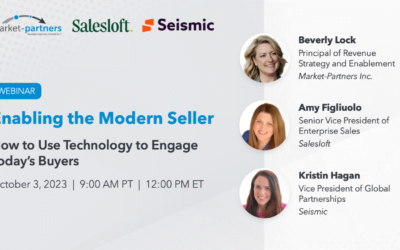Last month, our book, How Customer’s Buy…& Why They Don’t, made UXPressia’s user suggested must-read list for 2021. For the unfamiliar, UXPressia is a software company specializing in Customer Experience and Buying Journey mapping tools, and coincidentally, we began using their program for ideation and collaboration during our own shift to virtual. After some email introductions, we were fortunate enough to “sit down” and get some of their thoughts on the importance of the Customer Buying Journey. Here’s what their team had to say.
MARKET-PARTNERS INC.: The UXPressia Team has been providing Buying Journey Mapping software and resources since 2015. What originally drew you to the concept of mapping and managing the Buying Journey?
UXPRESSIA: It was a desire to build a better world where all services are human-centric. Bad products and services (and poor customer experiences, of course) had always been our pain, something that triggered us to take action. One day we thought that we could help others build better products and services by providing them with appropriate tools.
Since we were UX and CX professionals by ourselves, we knew such tools well. And among other tools, there was one that stood out for us: Customer Journey Mapping. We intuitively knew (and soon realized that it was true) that Customer Journey Mapping is just a generic term for journey maps that share the same features but might be a little bit different in applications: Buying Journeys, user journeys, employee journeys, etc.
MARKET-PARTNERS INC.: From your perspective, why do you believe that it is important for businesses to map their Buying Journeys? What results have you seen when clients change their approach?
UXPRESSIA: It may sound like a cliche, but we all have seen businesses that don’t map their Buying Journeys. Remember the times when you felt that business didn’t care about you as a customer, didn’t take into account your needs and communication channels you prefer, didn’t speak your language (literally and metaphorically). You would never have any deals with such services unless you are in a situation when you are forced to.
On the contrary, when your journey (as a buyer) is smooth and triggers positive emotions, you are more likely to stick with the service, become a loyal customer and brand advocate in the future. We’ve got a case study about that: Michelin Case Study.
One more reason for leveraging Customer Journey Mapping: setting up a powerful marketing funnel is great, but it doesn’t answer the question “Why?”. CJM combined with the funnel helps you understand that, find flaws and fix them. Buying Journeys focuses on people who are using them, people that buy from them, on their needs, contexts, pains, etc. And all that helps to build better journeys, delivering a better buying experience, attracting the right buyers, bringing more value to both your clients and your business.
We were also able to speak with Yuri Vedenin, founder of UXPressia, who shared a story about buying flowers for his mom’s birthday in an online store: “Everything was perfect – the images, price, and delivery time. I used this service before. But it turned out that I completely forgot what I did last time. So I took all the necessary steps on the site, I put the item in the basket, I was on the last step of my Buying Journey and… I bought flowers from another service. Just because the first site didn’t accept my card. And my second card. And didn’t tell me the reason. Nor did it have any online chat to speak to anyone from support.”
MARKET-PARTNERS INC.: What are some mistakes or misconceptions about Buying Journeys or Buying Journey mapping that you would like to clear up?
UXPRESSIA: There’re a lot of misconceptions about the differences and similarities between buyer and customer journeys. We wrote a blog post on a similar topic a couple of years ago.
Another problem is that many use demographic data to segment the audience, and it’s not always the right way to go (as well as build maps around such personas). We believe that it’s also essential to consider behaviors, goals, and motives that drive people’s decision-making.
One should remember that there is no one-size-fits-all Buying Journey structure. The structure can be different in each specific case. It all depends on the goals (business outcomes) you are trying to achieve. You can use a template to jump-start your initiative but be ready to adapt it to your business context.
MARKET-PARTNERS INC.: A cornerstone of your program is displaying the Buying Journey graphically, releasing new visual templates and updates monthly. What benefits have you found from good presentation, UI, and UX in terms of adopting this more customer-centric philosophy?
UXPRESSIA: As our customers say, aesthetically pleasing and straightforward design helps people grasp map ideas easily. Besides, a good presentation frequently simplifies getting buy-in from stakeholders. It helps the team “believe” in the journey they are being shown.
Templates are a great starting point for both journey mapping first-timers and experienced ones. They inspire, suggest some basic structure, contain useful domain-specific information (and images in many cases in the storyboard section), and can be customized to a specific business case.
We believe that UXPressia’s ease of use and learnability do users a good turn: having a tool that is approachable and can be played with helps them to start experimenting with methodology.
MARKET-PARTNERS INC.: As we all know, the shift to virtual work has caused a change in the way customers are buying. With many companies still without a plan to return to office, what do you believe are the secrets to success in the online world?
UXPRESSIA: There is no silver bullet to succeed in the online world. Success is in doing and trying your best. It’s time to rethink the way you work and your Buying Journey. With switching to online, your Buying Journey certainly changed, and you need to understand how.
Start with an online journey mapping workshop to co-create a Buying Journey map, generate journey improvement ideas based on it, and then put them into effect. Embrace the challenge to win!
MARKET-PARTNERS INC.: Recently, our book, How Customers Buy… & Why They Don’t, made your user recommended must-read list. If you’ve had a chance to read it, was there a section or idea you found particularly insightful?
UXPRESSIA: This book is very insightful, with lots of useful examples and case studies that help understand the concepts you describe. They all are so detailed and relatable! And so many of them are from your personal experience, which is inspiring. A personal story of how you came to the concept of the Buying Journey is just great.
There were many ideas that resonated with us on many levels, yet we’d like to highlight the following one, and let us quote: “No one buys anything because of a sales process. Customers only buy because of their own Buying Journey.” Moreover, reading about modes of the Customer Buying Journey made us think about how to visualize such journeys in our tool. The same was with recursive Buying Journeys and buying styles, and especially with a macro Buying Journey.
This book is a must-read for businesses who want to understand their customers (from their, not business perspective) and their Buying Journeys and improve or rethink their approach to creating customers. We believe the book will be super helpful for B2B, but those from the B2C domain will also find lots of valuable information, thought-provoking ideas (we highlighted and bookmarked half of the book!), tools, and frameworks.




